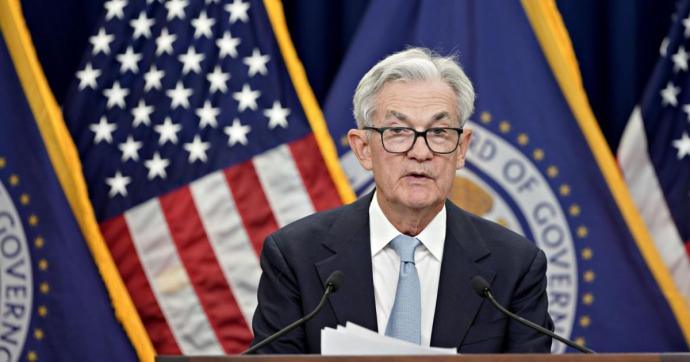The market is widely expected that Fed Chairman Powell's speech will provide important clues to the future direction of monetary policy.
From August 22 to 24, the historic Jackson Hole annual meeting will still be held in Jackson Hole, Wyoming, USA.
It is understood that all previous Jackson Hole meetings will invite central bankers, Nobel Prize winners and top academics from around the world to discuss pressing issues in the global economy and monetary policy.That's why the meeting is also known as the most closely watched central bank meeting outside of the Fed's eight annual meetings.
The theme of this year's annual meeting, "Reassessing the effectiveness and transmission mechanism of monetary policy," is particularly important as the global economy faces the challenges of post-epidemic recovery, high interest rates and geopolitical tensions.The market is widely expected that Fed Chairman Powell's speech will provide important clues to the future direction of monetary policy.
Here are the three highlights of this Jackson Hole meeting provided by Hawk Insight:
Powell's speech
At 10 a.m. Eastern Time on August 23, Federal Reserve Chairman Powell will deliver a speech, subject to be determined.Although the theme of this year's meeting was "Reassessing the effectiveness and transmission mechanism of monetary policy," Powell recently revealed, referring to the content of his speech at Jackson Hole, that "it (the speech) does not have to have anything to do with the theme of the meeting."

Investors aren't expecting Powell to give an outlook on the economy going forward, as he has in previous years.Instead, investors are looking to Powell to make specific predictions (or hints) about monetary policy in September, or to comment on the weak jobs data, as the sharp view on jobs may be good for a rate cut.
Steward Partners Global Advisory said if Powell fails to reinforce market expectations of a rate cut, it could trigger a massive sell-off in stocks.Bank of America Wealth Management, on the other hand, believes Powell may not give a very clear path to interest rates, but is more likely to provide that information at the FOMC meeting in September.
Policy Trends and Market Reactions of Global Central Banks
In addition to the Fed, the dynamics of other major central banks are also worth watching.Bank of England Governor Bailey and European Central Bank Chief Economist Philip Lane will also speak at the annual meeting.Against the backdrop of the global economic slowdown, how central banks find a balance between supporting economic growth and controlling inflation will also be one of the focuses of the annual meeting.

Looking back at history, in August 2022, Powell delivered a concise nine-minute speech at Jackson Hole, one of the shortest speeches by a Fed chairman at Jackson Hole in recent years, but one of the most lethal - when Powell's doused investors' hopes for a quick end to the Fed's rate hike, and the S & P 500 plunged4% in a day.
At present, with the U.S. economy "soft landing" is expected to heat up, the market for the Federal Reserve to cut interest rates sharply to ease the urgency.According to the Chicago Mercantile Exchange's FedWatch tool, the probability of a 25 basis point cut in September is 70.5%, while the probability of a 50 basis point cut is 29.5%.This suggests that market expectations for a rate cut are becoming clear, and we can expect Powell's speech to influence the market again.
The Fed will release minutes of its meeting
On Aug 21, EDT, before the meeting begins, the Fed will also release minutes of its policy meeting, which is expected to provide more clues on the topics of the Jackson Hole meeting.

The minutes of this meeting are highly concerned.At present, the market generally believes that the Fed in September to cut interest rates is a high probability event.However, due to the recent mixed economic data released by the United States, investors have repeatedly jumped between the U.S. economy "will fall into recession" and "will not fall into recession."
According to the U.S. Labor Department, the U.S. CPI rose 3% year-on-year in June, the lowest level in nearly 12 months; the Federal Reserve's more concerned personal consumption expenditure (PCE) price index rose 2.5%, the lowest level since March 2021.
In the previous data released in June, the U.S. unemployment rate increased by 0.1 percentage point to 4.1%, also the highest since November 2021.
Analysts say the rise in unemployment may also reflect the weakness of the U.S. economy.Against the backdrop of continued slowing inflation, the Fed may adopt a rate cut strategy to curb the economic downturn.
In addition, with the U.S. election approaching, a relatively moderate policy attitude needs to be created at this time to effectively boost the economy and create more jobs.


